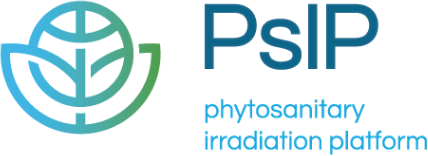
New coordinated research plans in phytosanitary irradiation (IAEA CRP 61026)
The first Research Coordination Meeting (RCM) of the new IAEA Coordinated Research Project (CRP) D61026 on Novel Irradiation Technology for Phytosanitary Treatment of Food Commodities and Promotion of Trade was held from 22 to 29 March 2022 as a virtual meeting. The RCM was attended by thirty representatives from thirteen countries (Argentina, Australia, Bangladesh, Brazil, China, Egypt, France, Indonesia, Israel,: ! Mexico, Pakistan, USA and Vietnam), two international organizations (IAEA and FAO) and the iia (PsIP). The meeting was chaired by Guy Hallman (USA) and Peter Leach (Australia) was the rapporteur.
The purpose of the meeting was to discuss and agree on individual and overall work plans and possibilities of collaboration.
Sixteen irradiation treatments have been adopted in International Standards for Phytosanitary Measures (ISPMs) as annexes to the International Standard on Phytosanitary Treatments for Regulated Pests (ISPM 28). However, only one is generic (ISPM 28 Annex 7 is generic for fruit flies of the family Tephritidae) but the others relate to specific pest species.
To support further up-take of the technology and increased trade in irradiated fresh produce, there is a need for further research to validate such generic doses and supplement proposals to support their acceptance in the ISPMs. The additional proposed generic doses and the one for fruit flies already in ISPM 28 would address over 90% of quarantine issues for fresh fruit and vegetable shipments. The rresearch plans that were established might ultimately lead to the validation of generic treatments for five pest groups:
- Leaf miners of the family Agromyzidae
- Mealybugs of the family Pseudococcidae
- Eggs and larvae of the order Lepidoptera
- Pupae of the order Lepidoptera
- All regulated insects except for pupa and adult Lepidoptera
In addition, entomologists in China will add to the literature on phytosanitary irradiation to control leafminers with studies of Liriomyza species, which will contribute to a proposal for a generic dose against leaf miners of the family Agromyzidae.
Several researchers also included Coleoptera species, mites and circular scales in their work on radiation tolerance and these will contribute to the generic dose for all regulated insects except for pupa and adult lepidoptera” and will add to the body of evidence supporting other generic and specific dose treatments.
Research workplans and collaborations were discussed, methodology recommendations were made, and three collaborative groups were formed to focus on the following topics:
- Factors that might affect the efficacy of irradiation, for example O2/CO2 atmospheres, dose rates, temperature etc. Mr. Daniel Hanh of the University of Florida, USA was nominated to be the key contact for this collaborative group.
- Lepidoptera: Ms. Magali Dalto of the Comisión Nacional de Energía Atómica, Argentina volunteered to be the key contact for this collaborative group.
- Mealybugs: Mr. Guoping Zhan of the Chinese Academy of Inspection and Quarantine, China, volunteered to be the key contact for this collaborative group.
Researchers involved with determining phytosanitary treatment doses and dose response of different pests will collaborate with Cory Penca, of the USDA APHIS so that their data can be used to develop and progress the Species Sensitivity Distributions approach to deriving generic doses.
It was also agreed to develop guidelines for phytosanitary irradiation research methodology with the help of CRP participants. These guidelines might later be submitted for consideration at the appropriate committee of the IPPC.
The Technical Officer for this CRP is Carl Blackburn, Food Irradiation Specialist, Food Safety and Control Section, Joint FAO/IAEA Centre of Nuclear Techniques in Food and Agriculture.

